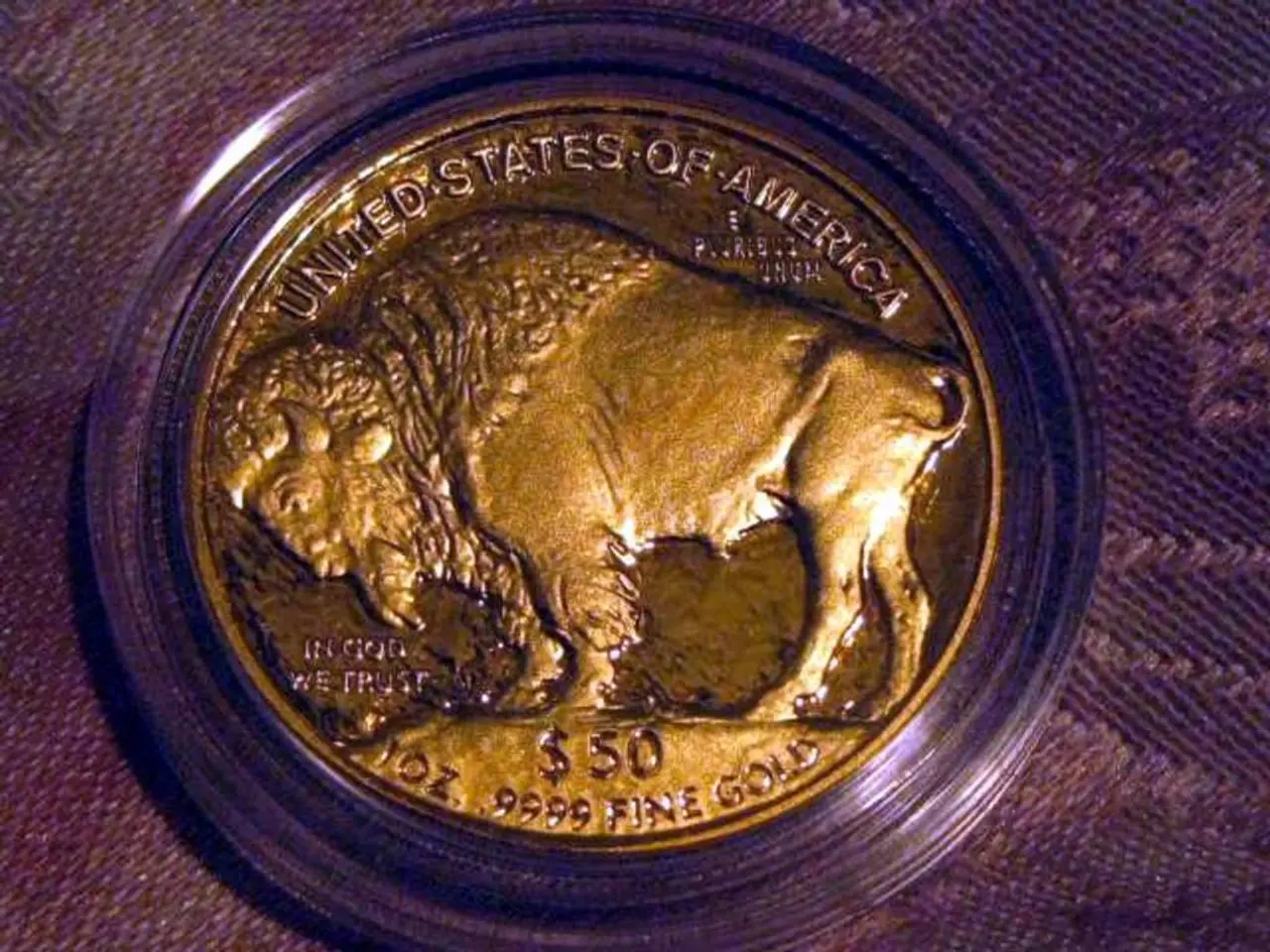Indian currency, the Rupee, experiences a decline of 6 paise, settling at 87.69 per US dollar during initial trading.
Published on August 13, 2025
The Indian rupee (INR) experienced a sharp depreciation against the US dollar (USD) in August, with inflation cooling to 1.55 per cent in July. The rupee opened at 87.63 against the USD at the interbank foreign exchange market, but witnessed fluctuations throughout the day, touching an intra-day low of 87.69 and an early high of 87.61.
The persistent depreciation of the INR is primarily driven by a combination of external shocks, internal economic pressures, and foreign capital outflows. The imposition of a 25% US tariff on Indian imports has caused a significant market reaction, triggering a depreciation of about 2.18% in August alone. This tariff has made Indian exports to the US costlier, worsening the trade balance and adding downward pressure on the rupee.
The strong US dollar and the Federal Reserve's policy also play a significant role in the INR's depreciation. The USD has strengthened by around 4% year-to-date due to a resilient US economy and delayed Federal Reserve rate cuts, making the dollar more attractive relative to the rupee. The Fed’s cautious outlook and hawkish stance support the dollar’s strength, contributing to the INR’s decline.
Foreign portfolio investors (FPIs) have also contributed to the rupee's depreciation, with continued outflows—equity and debt investors withdrawing $12.3 billion in Q2 2025 and nearly $92 million in equity outflows in July. FPIs remain cautious due to trade uncertainties, inflation risks, and currency depreciation, despite ongoing long-term investment interest.
Persistent inflation within India, along with structural factors such as a current account deficit of approximately 1.4% of GDP (fuelled mainly by high oil import bills), exacerbate the depreciation trend. Inflation risks limit the Reserve Bank of India’s (RBI) ability to ease rates deeply, which otherwise might have supported the rupee.
The RBI has responded with selective and calibrated foreign exchange interventions, including USD sales, FX swaps, and adjustments to gold import duties, aiming to curb volatility and avoid excessive depreciation without completely blocking market-driven correction. However, foreign exchange reserves have declined to about $60.29 billion, constraining RBI’s defense capacity.
Despite these challenges, the rupee ended 3 paise higher at 87.72 amid range-bound trade. The Sensex also climbed 327.79 points to 80,563.38 in early trade. It's worth noting that the Malpani Group opened Central India's largest water park in Indore, a significant event unrelated to the financial market.
Looking ahead, the rupee is forecasted to weaken further, potentially reaching 88.5 by Q4 2025 and 90 by FY 2026, reflecting ongoing external challenges and limited immediate policy levers. However, the depreciation has potential upside for export sectors like IT, which might benefit from a cheaper rupee.
References:
- Livemint (2025). Rupee depreciates as US tariffs bite, dollar strengthens. [online] Available at: https://www.livemint.com/news/india/rupee-depreciates-as-us-tariffs-bite-dollar-strengthens-11628854158516.html
- Reuters (2025). RBI sells $5 billion in foreign exchange to curb rupee depreciation. [online] Available at: https://www.reuters.com/business/india-rbi-sells-5-billion-foreign-exchange-curb-rupee-depreciation-2025-08-12/
- Economic Times (2025). Rupee forecast to weaken further, reach 88.5 by Q4 2025. [online] Available at: https://economictimes.indiatimes.com/news/economy/rupee-forecast-to-weaken-further-reach-88-5-by-q4-2025/articleshow/91319769.cms
- Financial Express (2025). US tariffs on Indian goods take a toll on rupee. [online] Available at: https://www.financialexpress.com/market/us-tariffs-on-indian-goods-take-a-toll-on-rupee/2346039/
- Business Standard (2025). RBI's strategic interventions to stabilize rupee. [online] Available at: https://www.business-standard.com/article/economy-policy/rbi-s-strategic-interventions-to-stabilize-rupee-125183800094_1.html
- The depreciation of the Indian rupee in August 2025 is partly attributed to a 25% US tariff on Indian imports, which made exports to the US costlier, affected the trade balance, and put pressure on the rupee.
- Foreign portfolio investors (FPIs) have withdrawn significant amounts of capital from India in Q2 2025 and July, contributing to the rupee's depreciation due to trade uncertainties, inflation risks, and currency depreciation.
- The resilient US economy and delayed Federal Reserve rate cuts have strengthened the US dollar, making it more attractive than the Indian rupee in the global markets and foreign exchange market, thereby contributing to the INR's depreciation.
- The persistent inflation within India, coupled with structural factors like a current account deficit, exacerbate the depreciation trend, limiting the Reserve Bank of India's (RBI) ability to lower interest rates, which could have stabilized the rupee.
- Despite ongoing challenges, selective and calibrated foreign exchange interventions by the RBI, such as USD sales, FX swaps, and adjustments to gold import duties, aim to curb volatility and avoid excessive depreciation while allowing for market-driven corrections.
- The depreciation of the rupee, despite anticipated further weakness, may provide benefits to export sectors like IT as a cheaper rupee could make Indian services more competitive in the global markets.




